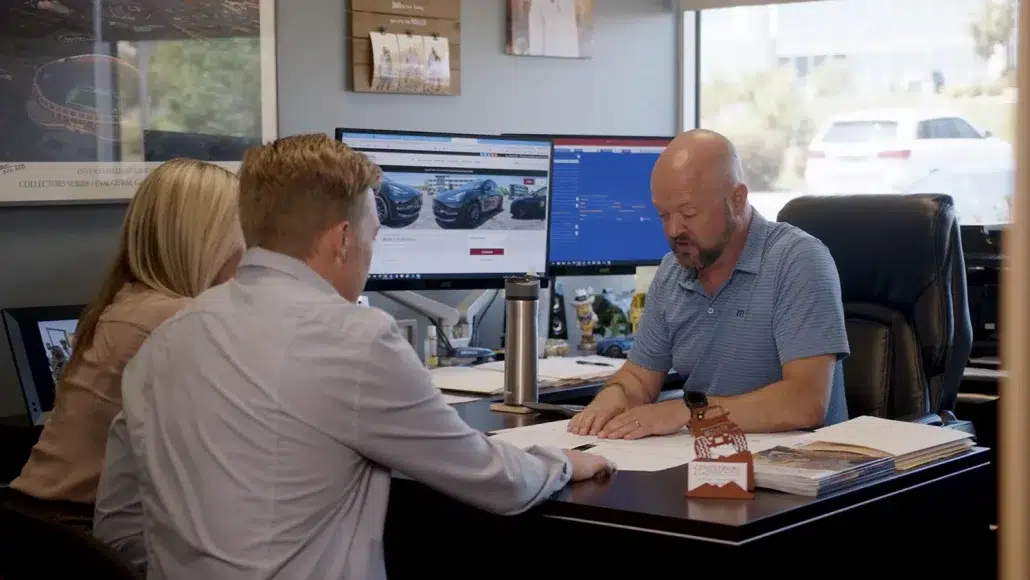
How to Get Out of a Car Lease Early
When the new car smell fades and you’re left with a lease that might no longer suit your needs, it’s easy to feel stuck. Maybe it was your first time leasing and you bit off more than you could chew. Or perhaps your life circumstances have changed since you signed your lease agreement. Whatever the reason, the thought of being locked into a car lease you no longer want or can afford can be stressful.
Understandably, one of the biggest worries when considering ending a lease early is the financial impact of breaking the agreement. The good news is that while early termination does have consequences, it doesn’t automatically spell disaster. There are various early lease termination options available and understanding them is the first step toward finding a solution that works best for you.
In this guide, we’ll break down the common reasons people seek to end their leases early, explore the different paths you can take, and clarify how each might affect your wallet. You don’t have to feel trapped. Let’s explore your options together.
Why People Want Out of Their Leases
Life is full of twists and turns, and the financial and practical considerations that led you to sign your car lease agreement may no longer align with your current reality. Whether it’s an unforeseen job change, the exciting (but sometimes car-altering) growth of your family, or a misstep in calculating the cost of leasing the car, the desire to end a lease early is more common than you might think. Understanding the reasons behind this desire can not only validate your feelings but also help you approach the situation with clarity as we explore potential solutions.
Here are some of the common scenarios that might lead you to consider breaking your lease:
- Job Relocation: A new job in a different city or state can bring unexpected transportation needs. You might need a different type of vehicle or want to avoid putting excessive miles on your leased car.
- Loss of Income: Financial hardship can make monthly lease payments difficult to manage, leading you to seek a more affordable transportation solution.
- Growing Family or Lifestyle Change: A new baby, the need to transport more passengers, or a shift in hobbies can mean your current vehicle no longer meets your practical requirements.
- Car No Longer Fits Needs: Perhaps you initially leased a sporty coupe but now need something with more cargo space, or maybe the fuel efficiency of your current vehicle has become a concern.
- Found a Better Financing Option or Lower Payment: Sometimes, after entering a lease, individuals might discover more favorable financing terms or a vehicle with a lower monthly payment that better suits their budget.
Recognizing your situation within these common scenarios can help you feel less isolated and more motivated to explore your options. Now, let’s tackle the big question on everyone’s mind: How can I get out of a car lease early?
Stuck in a bad lease agreement? Our expert auto brokers can help terminate your lease and get you into a vehicle with more favorable terms.
Your Options for Getting Out of a Lease Early
When you find yourself needing to end a car lease early, you can get the upper hand by understanding your available options. While there are several routes that you can take, each path has its own set of advantages and disadvantages, particularly concerning cost and convenience. Let’s take a look at the different methods for early lease termination, as well as the pros and cons of each option.
1. Lease Transfer (Lease Assumption)
How it Works: You find another credit-worthy individual who agrees to take over the remaining terms of your lease. This involves an application process for the new lessee, and if approved, they essentially step into your shoes for the rest of the lease period. Generally, if you successfully transfer your lease to another qualified individual, the negative financial impact is minimal to none. Once the new lessee takes over the agreement and makes payments, your obligation ends.
Pros
- Often the least financially damaging as you will not face early termination fees or remain locked into the agreement.
- The buyer takes over your remaining monthly payments, freeing you from that obligation.
Cons
- Some car brands or leasing companies do not allow lease transfers.
- You may be responsible for fees associated with the transfer process.
- The new lessee will need to meet the leasing company’s credit approval requirements.
2. Trade-in or Trade-up
How it Works: You trade in your leased vehicle at a dealership, either to lease a new vehicle or to purchase one. The dealership will assess the value of your trade-in and factor it into the cost of your new vehicle.
When you trade in your leased vehicle, the dealer handles the termination process. This option is typically a financially sound choice, , but it’s worth noting that if you have negative equity (i.e. you owe more on the lease than the car is worth), this amount will likely be rolled into your new loan or lease. While this will change your monthly payments, it’s often better than remaining shackled by bad lease terms. .
Pros
- Can be a relatively easy process if you plan on getting another vehicle.
- May be able to roll negative equity (if you owe more on the lease than the car is worth) into the new lease or loan.
Cons
- Rolling negative equity will increase your new monthly payments.
- You will still be responsible for any early termination fees and other charges outlined in your lease agreement, which may be factored into the new deal.
3. Early Buyout
How it Works: You purchase the leased vehicle outright from the leasing company. The buyout price is typically stated in your lease agreement and may include the remaining balance, depreciation costs, and a purchase option fee.
Whether or not purchasing the vehicle outright is the best option depends on several factors. The most important consideration when making the decision is to compare the market value of the vehicle and how much you still owe on the lease. If the value is more than the buyout price, this option may give you a financial advantage.
Pros
- You gain full ownership of the vehicle, allowing you to then sell it privately or trade it in.
Cons
- Can involve a large upfront cost, including the buyout price, taxes, and other fees.
- Not always the best financial move if the car’s market value is lower than the buyout price.
4. Voluntary Surrender
How it Works: You contact the leasing company and inform them that you wish to return the vehicle early. They will then take possession of the car. While it’s generally viewed less negatively than a repossession, it can still show up on your credit report and may have a negative impact. The leasing company will then sell the vehicle, and you’ll be responsible for any remaining balance after the sale, including fees.
Pros
- Generally better than a repossession in terms of credit impact.
Cons
- You will likely still be responsible for early termination fees and the remaining balance on the lease after the leasing company sells the vehicle (this is known as a deficiency balance).
- Can have a negative impact on your credit report.
5. Working with Your Auto Broker
How it Works: An experienced auto broker can act as your advocate, helping you understand your lease terms, explore potential transfer options, and even negotiate with the leasing company on your behalf.
Working with your auto broker can be one of the most stress-free and strategic ways to navigate the end of your lease. Instead of trying to interpret fine print or juggle confusing options alone, a knowledgeable broker can break down the true cost of each path, helping you see the numbers clearly. They often have insider access to lease assumption networks or alternative financing options that aren’t easily found on your own. Perhaps most importantly, a broker can offer a level-headed perspective during what’s often an emotional decision, guiding you toward the most financially sound choice without pressure or second-guessing.
When to Talk to a Pro
Deciding on the best way to get out of a car lease early can feel overwhelming. If you’re uncertain of which method will work best for your situation, the best thing that you can do is tap into the expertise of an independent auto broker. Instead of going it alone and potentially making a costly mistake , consider reaching out to a professional who can act as your advocate.
How an Auto Broker Help Get You Out of a Car Lease Early
- Evaluate Your Lease Terms: A broker can thoroughly review your lease agreement, explaining the specific clauses related to early termination, including any potential fees and obligations. This ensures you have a clear understanding of your current situation.
- Explore Lease Assumption Networks: Experienced brokers often have access to networks of individuals looking to take over existing leases. They can help market your lease to potential candidates, streamlining the transfer process if that’s a viable option.
- Assess Trade-in Values and New Financing: If trading in your leased vehicle is a possibility, a broker can provide an unbiased assessment of its market value and help you explore options for a new lease or purchase with potentially more favorable terms.
- Negotiate with the Leasing Company: In some cases, a broker can act as an intermediary, negotiating with the leasing company on your behalf to potentially reduce early termination fees or explore other mutually agreeable solutions.
- Compare the True Cost of Keeping vs. Switching: By running the numbers on various scenarios, a broker can help you understand the long-term financial implications of staying in your current lease versus terminating it early through different methods. This allows you to make a truly informed decision based on your individual circumstances.
- Provide Unbiased Guidance: Unlike a dealership that may be primarily focused on selling you a new car, an independent auto broker’s priority is to find the solution that best serves your interests. They can offer objective advice without the pressure of a direct sale.
If you’re feeling unsure about the best way to proceed with your early lease termination, consulting with an experienced auto broker can provide clarity, save you time and money, and help you avoid potential pitfalls.

Making the Smart Choice When Ending Your Car Lease Early
Feeling stuck in a car lease that no longer fits your life or budget can be a significant source of stress. However, as we’ve explored, you’re not without options. Understanding the various paths to early lease termination and their potential financial impact is the first step toward regaining control.
Remember that while early termination may involve some costs, staying in a lease that is no longer financially viable or suitable for your needs can often be more expensive in the long run, both financially and emotionally. By carefully considering your choices—whether it’s exploring a lease transfer, evaluating trade-in possibilities, or understanding the implications of a voluntary surrender—you can make an informed decision that minimizes negative consequences.
The key takeaway is that you don’t have to navigate this complex process alone. An experienced auto broker can provide invaluable guidance, helping you understand your lease agreement, explore all available options, and negotiate the best possible outcome. Their expertise can potentially save you time, money, and unnecessary stress, ensuring you make a smart choice that aligns with your individual circumstances and protects your financial well-being.
If your current lease isn’t working for you, don’t feel trapped. Tell us about your current lease today and let our experts help you explore your options and get you into a vehicle that works better for your situation.